10% Discount first month! Book lessons today!
Explore Cultural Dishes from Five Countries
Discover how food transcends mere sustenance and serves as a gateway to explore the rich cultural heritage of different countries. Join us as we travel through famous foods that tell unique stories about their origins and traditions.
GALACTIC KIDS CORNER
Lorie Sprague
1/14/20255 دقيقة قراءة
Italy: Pizza
Pizza was born in Naples, Italy! One of the most famous types is Margherita pizza. It has tomatoes, mozzarella cheese, and basil, which represent the colors of the Italian flag: red, white, and green. Italians take their pizza very seriously, and there are even rules about how to make the perfect pizza dough! The dough must be soft, stretchy, and allowed to rise slowly to create the best flavor.
The process of making pizza begins with mixing flour, water, yeast, and a pinch of salt to make the dough. The dough is kneaded until it’s smooth, then left to rise for several hours. After shaping the dough into a flat circle, it’s topped with tomato sauce, fresh mozzarella, and basil leaves. It’s baked in a wood-fired oven at a high temperature, which gives it a crispy crust and a smoky flavor.
Pizza dates back to the 18th century when it was a simple meal for poor workers. Today, it’s a global favorite. Authentic Italian pizza is baked in a wood-fired oven, giving it a unique smoky flavor. The crust is thin, slightly crispy on the outside, and soft on the inside. Toppings vary, but Italians believe in keeping it simple to let the fresh ingredients shine.
Key Words:
Dough (noun): Soft bread before it’s baked.
Topping (noun): Food that goes on top of something, like pizza.
Basil (noun): A green herb that smells amazing!
Fun Fact: Italians eat pizza with a fork and knife, not with their hands!
Extra Activity: Can you find Italy on a map? What other foods come from Italy?
Japan: Sushi
Sushi is all about rice! The rice is mixed with vinegar and often paired with seafood or vegetables. Not all sushi includes raw fish—some have cooked ingredients or just veggies. In Japan, sushi is often considered a special treat and is presented beautifully, like art on a plate. Sushi chefs, called "itamae," train for years to master their craft, especially the skill of slicing fish perfectly.
The preparation of sushi begins with washing and cooking short-grain rice. Once cooked, it’s seasoned with a mixture of rice vinegar, sugar, and salt. The rice is then cooled and shaped into small portions. For nigiri, slices of fresh fish are placed on top of rice. Maki rolls are made by spreading rice on a sheet of seaweed, adding fillings like fish, avocado, or cucumber, and rolling it tightly. Each piece is carefully cut into bite-sized portions.
Sushi became popular in Japan over 200 years ago and was originally a way to preserve fish using fermented rice. Today, it’s enjoyed worldwide, and you can even find creative versions with unique ingredients like mango or avocado.
Key Words:
Vinegar (noun): A sour liquid used to add flavor.
Seafood (noun): Food from the sea, like shrimp or fish.
Rice (noun): Small grains that can be white or brown.
Fun Fact: Sushi chefs train for years to make the perfect rice.
Extra Activity: Practice saying "sushi" in Japanese: すし (su-shi). Can you learn more Japanese food words?
Mexico: Tacos
Tacos are a fun and tasty meal from Mexico. They start with a soft corn tortilla filled with meat, beans, or veggies. Many people add salsa for extra flavor. In Mexico, there are many types of tacos, like "al pastor" (marinated pork) or "fish tacos." Tacos are also a popular street food, and you can often find them at food stalls called "taquerías." Did you know that tacos date back to the Aztec Empire?
The preparation of tacos begins with making fresh tortillas from masa, a type of corn dough. The tortillas are heated on a griddle until soft and warm. For "al pastor" tacos, pork is marinated in a blend of spices, pineapple juice, and vinegar, then cooked on a vertical spit. "Barbacoa" tacos are made by slow-cooking meat, often in a pit or slow cooker, to make it tender and flavorful. Fresh toppings like chopped onions, cilantro, and lime juice add a burst of freshness.
Key Words:
Tortilla (noun): A flat, round bread made from corn or wheat.
Salsa (noun): A spicy sauce made from tomatoes and peppers.
Beans (noun): A small, healthy food full of protein.
Fun Fact: In Mexico, tacos are often eaten for breakfast!
Extra Activity: Make your own taco! Use tortillas, and fill them with your favorite ingredients.
India: Curry
Indian curries are full of spices! They can be mild (not spicy) or very hot. People eat curry with rice or naan bread, which is soft and delicious. A curry can be made with meat, vegetables, or both. Each region in India has its own special way of making curry, using local spices and ingredients.
To make a curry, spices like turmeric, cumin, coriander, and garam masala are roasted in oil to release their flavors. Onions, garlic, and ginger are often sautéed before adding the main ingredients, such as chicken, lentils, or vegetables. Coconut milk, yogurt, or cream is used to create a rich and creamy sauce. The dish is simmered until all the flavors are blended.
Northern India is famous for creamy curries like butter chicken, which are made with tomatoes and cream. In the south, curries are spicier and often coconut-based, like Kerala’s fish curry. Spices like turmeric, cumin, and coriander are essential to creating rich flavors. Curries are deeply rooted in Indian history and vary greatly from household to household. Did you know curry is so popular that it’s enjoyed in many other countries, like England and Thailand?
Key Words:
Spicy (adjective): Food with a hot taste.
Mild (adjective): Not strong in flavor.
Naan (noun): A type of flatbread from India.
Fun Fact: Every Indian family has its own secret spice mix for curry.
Extra Activity: Smell some spices at home. Can you guess which ones are used in curry?
France: Croissant
The croissant is a flaky, buttery pastry from France. Its shape looks like a crescent moon. Croissants are made by layering butter and dough, which creates a flaky texture. They are often enjoyed for breakfast with a little jam or chocolate. In French bakeries, called "boulangeries," croissants are freshly baked every morning.
The preparation of croissants begins with making a yeast-based dough, which is folded multiple times with layers of cold butter. This process, called laminating, creates thin, flaky layers. The dough is rolled out, cut into triangles, and rolled into a crescent shape before being left to rise. Finally, they are brushed with egg wash and baked until golden brown.
The croissant’s history is surprising—it actually originated in Austria as the “kipferl” pastry and was later adapted by French bakers. Today, croissants symbolize French culture and are enjoyed around the world. Pairing a croissant with a cup of hot coffee is a classic French breakfast.
Key Words:
Pastry (noun): A sweet or savory baked treat.
Flaky (adjective): Layers that break apart easily.
Crescent (noun): A curved shape like the moon.
Fun Fact: Croissants are not originally from France—they came from Austria!
Extra Activity: Try saying "croissant" with a French accent. Can you bake your own croissants at home?
Grammar Practice: Adjectives
Adjectives are words that describe nouns. For example, in "flaky croissant," the word flaky describes the croissant. Can you find more adjectives in this article? Write them down and share them with a friend!
Comprehension Check
Why do the ingredients on a Margherita pizza represent the Italian flag?
What is the most important part of sushi?
What makes tacos different from pizza?
What are two ways people eat curry?
Why are croissants shaped like a crescent?
Discussion Time
What food from this list would you like to try the most? Why?
How do you think these foods show what life is like in their countries?
Ask your family: What’s a food from your country that tells a story?
Glossary
Dough (noun): Bread before it is baked.
Topping (noun): Food added on top of something.
Vinegar (noun): A sour-tasting liquid used in food.
Tortilla (noun): A thin, round bread from Mexico.
Pastry (noun): A sweet or savory baked food.
Spicy (adjective): Food that tastes hot.
Flaky (adjective): Breaking into thin, crispy layers.
Now that you’ve learned about these amazing foods, why not try making one at home with your family? Share your creations with friends, and tell them what you’ve learned about the culture behind the dish. Let’s make learning fun and delicious!
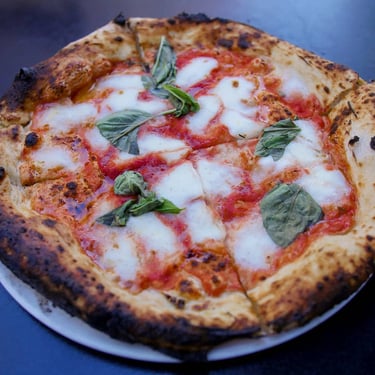
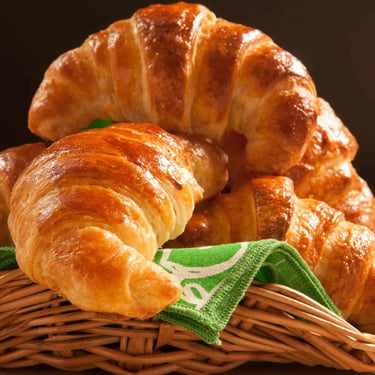
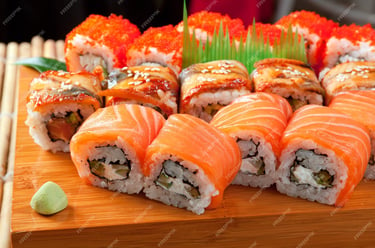
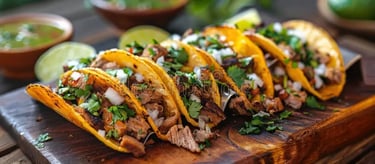
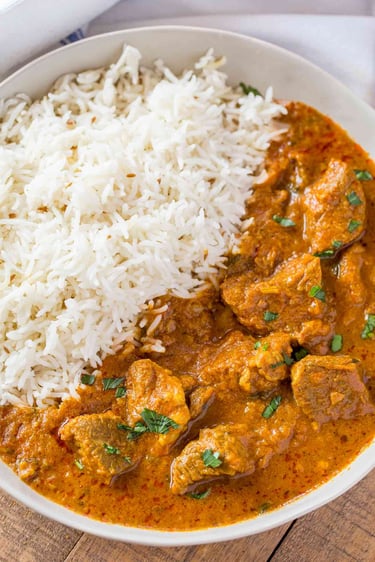





تعلّم
تمكين العقول الشابة على مستوى العالم من خلال دروس اللغة الإنجليزية عبر الإنترنت"
WhatsApp +1 541 531 2853
© 2019-2025. Galactic English Tutoring. All rights reserved.
Quick Links:
path2success@galacticenglish.com
Student Care:
I'm on Social
تنمو
اللمعان


